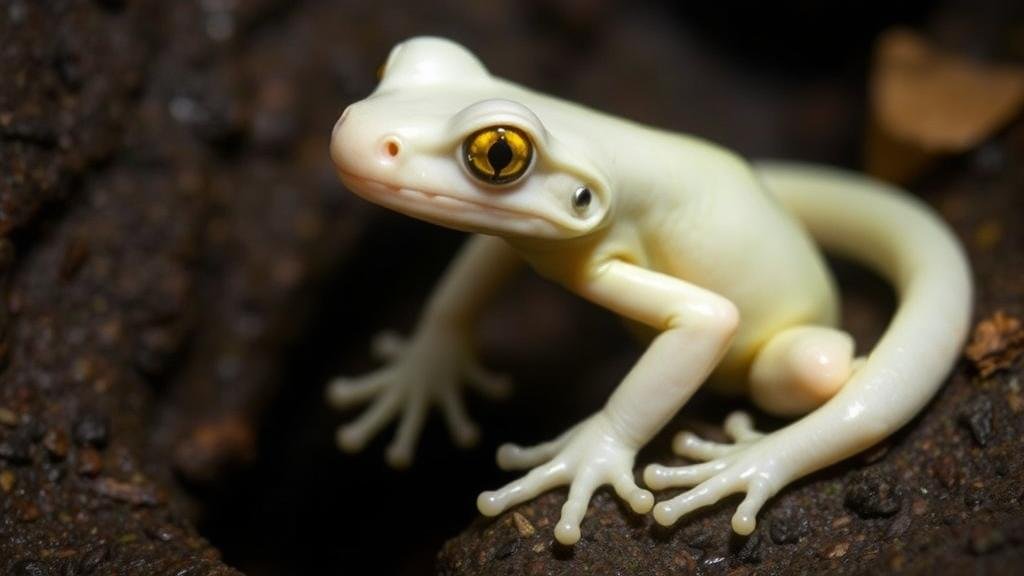Exploring sinkholes rumored to be home to rare albino amphibians.
Exploring Sinkholes Rumored to Be Home to Rare Albino Amphibians
Sinkholes are natural depressions in the Earths surface that can form suddenly, often leading to the discovery of unique ecosystems. In recent years, rumors have surfaced about certain sinkholes housing rare albino amphibians, drawing the interest of scientists, adventurers, and nature enthusiasts. This article will delve into the phenomenon of sinkholes, their ecological significance, and the allure surrounding these elusive albino amphibians.
Understanding Sinkholes
A sinkhole, also known as a cenote or doline, is a depression or hole in the ground caused by the collapse of a surface layer. commonly occur in regions where there is soluble rock, such as limestone, gypsum, or salt. In the United States, Florida is notorious for its sinkholes, with the state averaging 7 to 8 new sinkholes per day. The formation process typically involves several stages:
- Recharge: Water from rainfall or surface sources permeates the ground, slowly dissolving the underlying rock.
- Void Formation: Over time, cavities form underground as the rock dissolves, leading to increasingly unstable conditions.
- Collapse: Eventually, the surface layer becomes too weak to support itself, resulting in a sudden collapse.
Rare Albino Amphibians: Myth or Reality?
Albino amphibians, characterized by their lack of pigmentation, are genuinely rare. Albino variations can occur in any amphibian species but are particularly noted among frogs, toads, and salamanders. The absence of melanin, while visually striking, can make these creatures more vulnerable, as they are prone to predation and sun exposure.
Recent reports have emerged from sinkholes in regions such as Florida, Mexico, and parts of Central America, claiming sightings of these cryptic creatures. The most cited example is the Ghost Frog of the Yucatán Peninsula in Mexico, said to inhabit deep cenotes and sinkholes. This rumored species potentially represents a unique ecosystem that has evolved away from its more common relatives.
Ecological Significance of Sinkholes
Sinkholes play a crucial role in environmental ecology. They create distinct microhabitats that support unique flora and fauna. The moisture-retaining characteristics of sinkholes promote biodiversity, providing both direct and indirect support to various species.
Also, the isolation caused by a sinkhole can lead to speciation, where organisms adapt to their specific environment over generations. For example, the discovery of new cave-dwelling species illustrates how sinkholes facilitate evolutionary processes. Studies have identified more than 350 distinct species in Florida’s sinkhole ecosystems, including some that exist nowhere else on Earth.
Notable Sinkholes for Exploration
Several sinkholes across the globe have generated interest for their unusual wildlife and geological features:
- Devils Sinkhole (Texas, USA): This 50-foot-wide sinkhole is the largest in the state and supports a population of bats, attracting scientists and wildlife enthusiasts alike.
- Cenote Ik Kil (Yucatán, Mexico): A popular tourist destination known for its stunning beauty, it is also rumored to be home to unique amphibians.
- The Great Blue Hole (Belize): While primarily a diving spot, studies suggest potential undiscovered species lurking in its depths.
Real-World Research and Conservation Efforts
Ongoing research aims to further investigate the biodiversity found within sinkholes. Scientists conduct expeditions to document and analyze the species living in these unique environments. conservation of these ecosystems is vital, as many are threatened by human activity, including urbanization, pollution, and climate change.
For example, the University of Florida has initiated programs aimed at assessing the health of amphibian populations in sinkholes across the state. These studies have revealed alarming declines in amphibian diversity, which are thought to be linked to habitat destruction and disease.
Actionable Takeaways
For those interested in exploring sinkholes or studying the creatures within them, consider the following:
- Research local guidelines: Many sinkholes are located in protected areas, so its essential to understand regulations before planning a visit.
- Participate in citizen science: Many organizations encourage public involvement in data collection regarding amphibian populations.
- Support conservation: Donate to organizations focused on protecting fragile ecosystems, including those affected by sinkhole formation.
To wrap up, sinkholes are not just geological curiosities; they represent critical habitats for potentially rare species like albino amphibians. As interest in these ecosystems grows, it is vital to balance exploration with conservation, ensuring that we protect the unique biodiversity they harbor for future generations.



